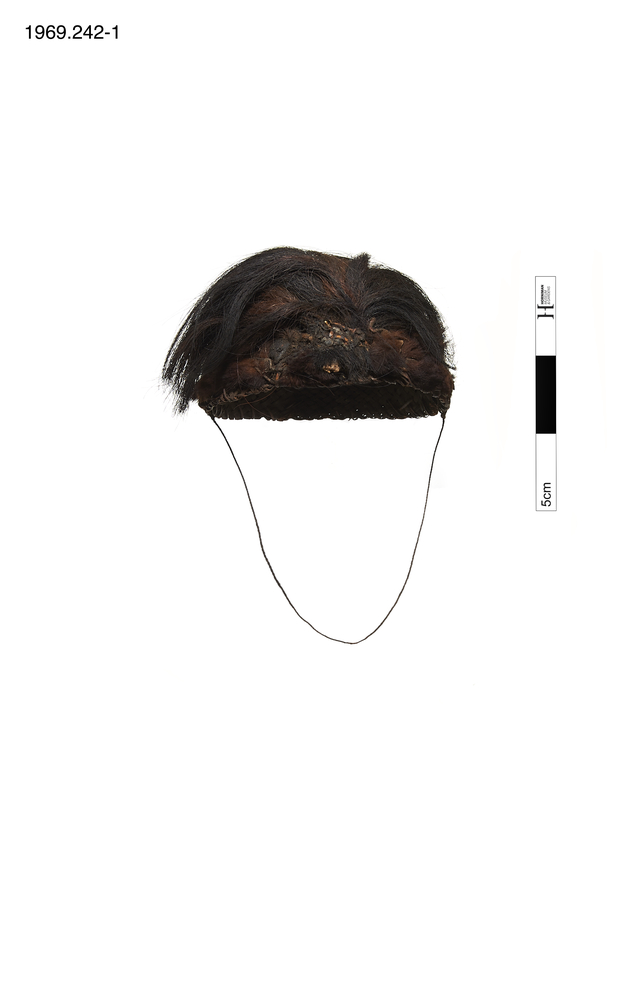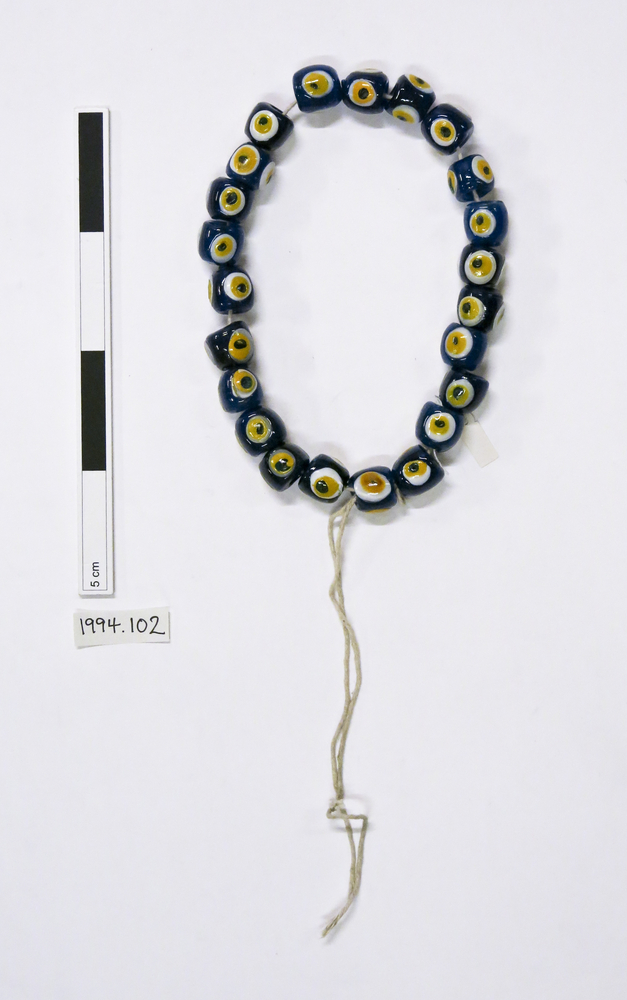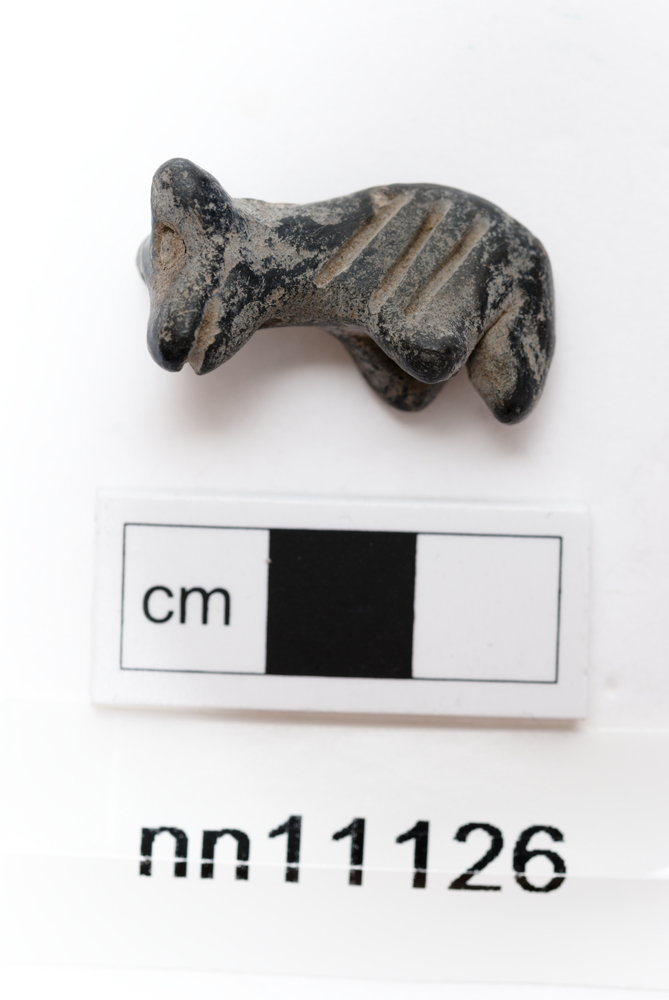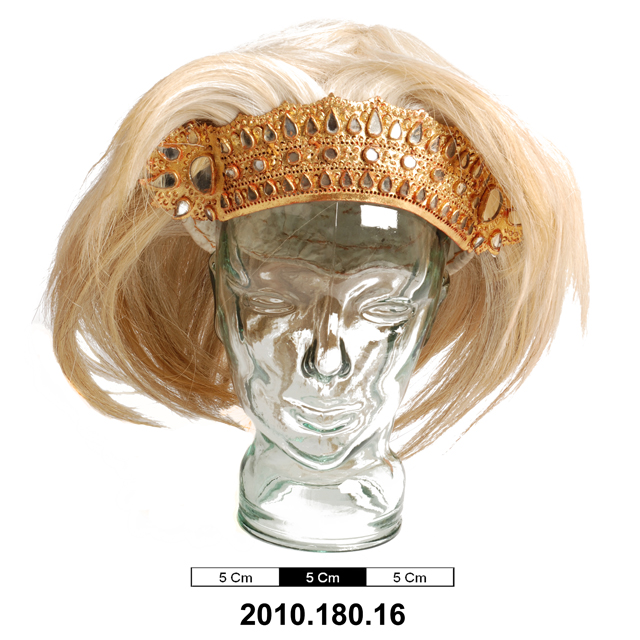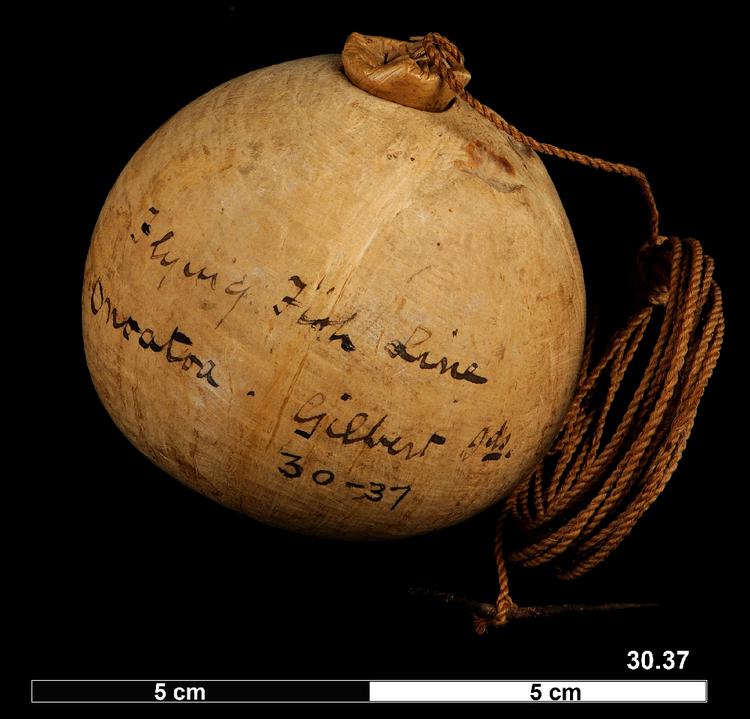
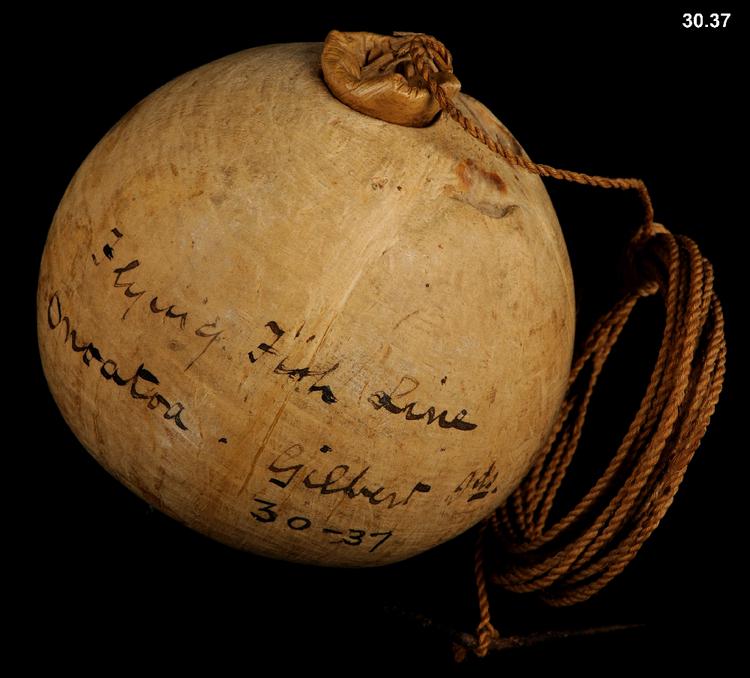
A float formed of a coconut with a coconut wood stopper. The line of coconut fibre is secured inside the float and is tied to an iron gorge that has a point at one end and a bend in the middle.
Tackle for Catching Flying Fish, Kiribati, Eastern Micronesia This gorge, a short stick of coconut wood pointed at both ends, becomes stuck between a flying fish’s jaws when it takes the bait. Traditionally, the Flying Fish (Exocoetidae spp.) was the second-most popular food fish for i-Kiribati people. The fish occur in enormous shoals in the waters of Kiribati. Catching such a prey is highly desirable, but not entirely straightforward, and i-Kiribati fishermen have developed a number of different methods to achieve this. Many methods involve night fishing using handheld flaming torches and hand-nets, but this set of tackle is for day fishing. : Mills, Andy. The gorge is strung on a strong line of plaited coconut fibre, which is suspended from a float made from the nut of the same tree. The gorge is concealed inside a piece of rock crab (a leg or claw joint, perhaps) which serves as bait. Historically, it was the responsibility of a fisherman’s children to collect crabs for him out on the reef at low tide, on the day before he went fishing for flying fish. Flying fish fishing (te tatae) was looked upon as a special activity by the i-Kiribati, and it was, like bonito fishing throughout much of Oceania, hedged about with a complex series of prohibitions before, during and after. Failure to avoid certain foods, in particular, was understood to give the fisherman a lingering smell that scared the fish away. Coconut wood, coconut fibre, coconut shell. Collected by Admiral E. H. M. Davis aboard HMS Royalist during the period 1890-1893, and purchased by the Museum in 1930.



